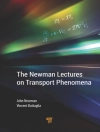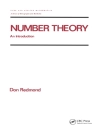Mary Somerville’s ‘A Preliminary Dissertation on the Mechanisms of the Heavens’ is a groundbreaking work that delves into the intricate workings of the celestial bodies. Written in a clear and concise style, Somerville explores the mechanisms of the heavens through a combination of scientific observation and mathematical analysis. This book serves as a significant contribution to the field of astronomy and displays a deep understanding of the natural world. It is a must-read for anyone interested in the mysteries of the universe. Somerville’s literary style is engaging and accessible, making complex scientific concepts understandable to a wider audience. This book is a testament to her intellect and passion for astronomy. Mary Somerville, a self-taught mathematician and scientist, was a trailblazer in a male-dominated field. Her dedication to learning and her perseverance in overcoming societal barriers are evident in her writing. ‘A Preliminary Dissertation on the Mechanisms of the Heavens’ is a testament to her brilliance and serves as an inspiration for future generations of scientists and scholars. I highly recommend this book to anyone with a thirst for knowledge and a fascination with the cosmos.
Despre autor
Mary Somerville (1780-1872) was a Scottish science writer and polymath, today celebrated as a pioneering figure in the scientific community. Not only was she one of the first female scientists to gain recognition in the male-dominated field of the 19th century, but Somerville also played a crucial role in the popularization of science. Her seminal work, ‘A Preliminary Dissertation on the Mechanisms of the Heavens’ (1831), is a clear testament to her mastery and her ability to synthesize complex scientific ideas into a format accessible to a broader audience. This work, a translation and expansion of Pierre-Simon Laplace’s ‘Mécanique Céleste’, demonstrated her deep understanding of celestial mechanics and her ability to communicate scientific concepts effectively. Somerville’s literary style often wove explanations with eloquence and clarity, reflecting her thorough comprehension of the subjects at hand. Her influence extended beyond her writings; she was a role model for women in academia, paving the way for future generations. Her numerous accolades, including being jointly awarded with Caroline Herschel the Royal Astronomical Society’s gold medal for their contributions to science, attest to her exceptional intellect and accomplishments (Patterson, 2012).












